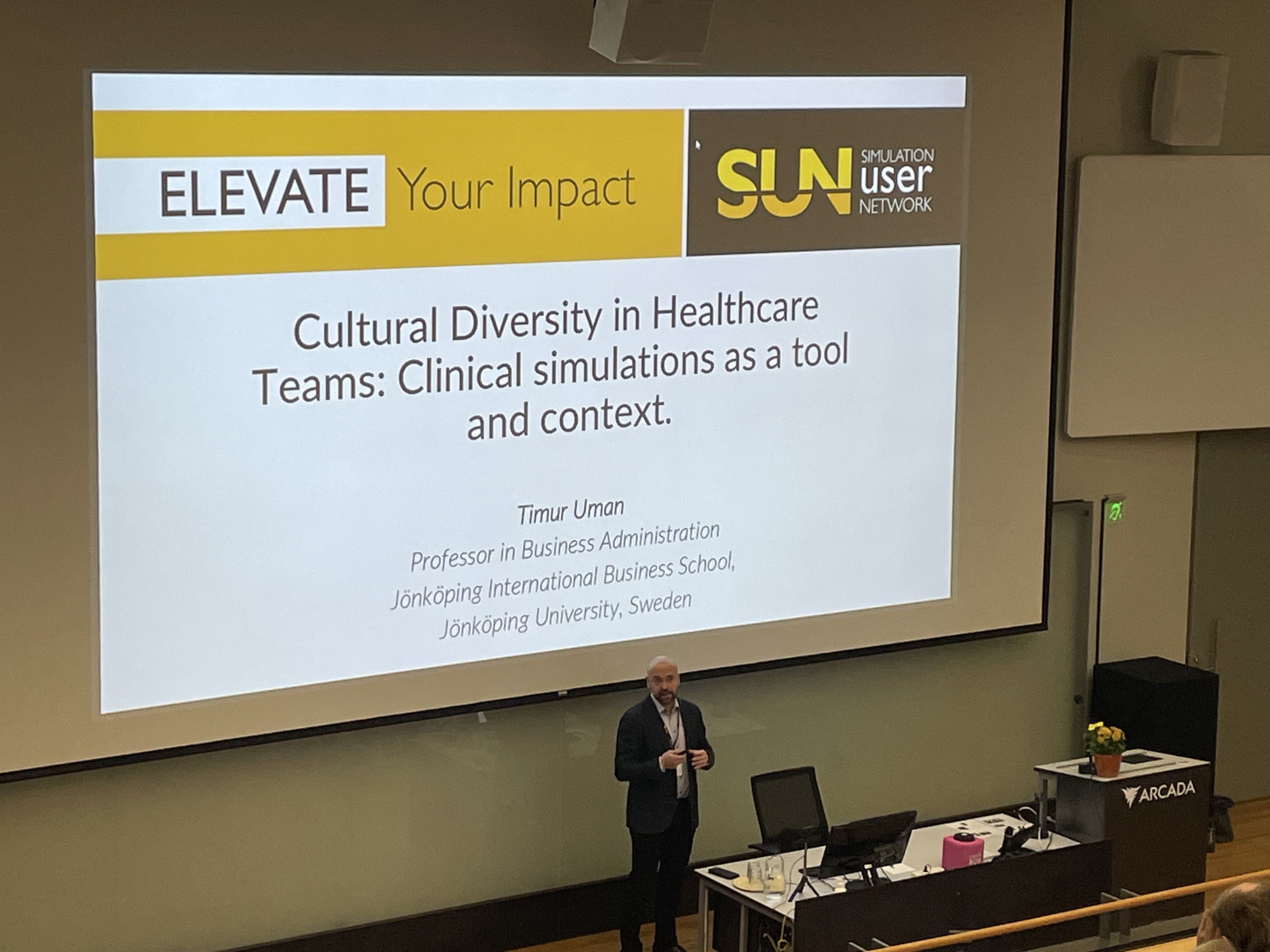Cultural Diversity in Healthcare: Exploring Challenges and Opportunities for Patient Safety
Professor Timur Uman delivered a keynote speech at the Nordic SUN 2024 - Simulation User Network meeting.
Timur's presentation shed light on the dynamics of culturally diverse teams in healthcare. and emphasized how simulations and simulated environments can help tackle challenges arising from cultural diversity while unlocking its immense potential to improve teamwork and patient safety.
This presentation is rooted in an ongoing research project titled "Cultural Diversity in Multiprofessional Teams in Healthcare and Patient Safety," which is jointly conducted by Jönköping Academy (JA), Jönköping International Business School (JIBS), Metodikum, and Qulturum. The project is funded by the Jan Wallanders and Tom Hedelius Foundation and Futurum.

Understanding the Importance of Diversity in Healthcare Teams
Cultural diversity is an increasingly everyday reality in Sweden, reflecting broader trends of global migration and minority representation. This is evident in healthcare, where teamwork in culturally diverse, multiprofessional settings is the norm - this diversity brings both opportunities and challenges, especially in contexts where life and health are on the line.
Effective teamwork is a cornerstone of modern, patient-centered healthcare systems, offering solutions to improve coordination, efficiency, and quality. Yet, obstacles to smooth collaboration often compromise patient safety, with teamwork-related issues contributing to nearly a third of all reported incidents in healthcare settings.
A Step Toward Safer and More Inclusive Healthcare
The projects' findings aim to guide healthcare organizations to manage cultural diversity effectively, emphasizing that the question is no longer whether diversity is desirable but how to harness its full potential. The project underscores the importance of targeted leadership strategies and the use of simulation-based training as tools to foster stronger, safer, and more inclusive teams.
For more about the project and its implications for healthcare, visit: Project Link.

